Top 10 Expository Essay Topics on Religion and Philosophy and Samples
With Toplist chosen list of expository essay topics on religion and philosophy, you may go on a voyage of intellectual study. Discover thought provoking topics ... read more...and insightful samples to help and motivate your expository writing efforts in these profound and thoughtful domains.
-
Essay topic: The connection between optimism and reality
Answer:
Life presents challenges, and how we navigate them defines our outlook. William Arthur Ward's words illuminate the attitudes of pessimism, optimism, and realism. I believe the boundary between optimism and reality is subtle, impacting our actions and interactions. Let's delve into how these perspectives shape our journey.
Realism, defined as accepting things as they truly exist, forms the foundation. Optimism, conversely, is the hopeful anticipation of favorable outcomes. Striking a balance between the two is crucial. While realism acknowledges life's uncertainties and fluctuations, optimism injects positivity, influencing our thoughts and interactions. Whether facing the unpredictability of the future or dealing with challenges, a blend of realism and optimism allows for a measured approach. The glass-half-full mindset prevails, offering hope even in uncertain situations.
In the metaphorical "glass of water" experiment, an optimist envisions hopeful possibilities, a realist anticipates likely outcomes, and a pessimist foresees negative results. Perception, influenced by personal biases, shapes our perspective. Reality forms the broad canvas, with optimism and pessimism adding nuanced details. Life, akin to a mountain track, features both sunny stretches and sudden storms. Optimistic moments amid challenges anchor us in reality, helping us face the truth.
Confronting challenges head-on is essential for personal growth. Walking away may offer temporary relief, but it sets the stage for eventual failure. Gene Roddenberry's insight echoes the ongoing human adventure. Realistic expectations, coupled with optimistic beliefs, pave the way for resilience. In the face of life's ups and downs, individuals shape their narratives, choosing how to navigate experiences and move forward towards a potentially bright ending.
Photo by Andrea Piacquadio via pexels 
Photo by Alexander Suhorucov via pexels -
Essay topic: Deconstruction theory: Its importance in law
Answer:
Deconstruction, a theory initiated by Jacques Derrida, sparked a revolution in critical thought. Introduced in his 1967 book "Of Grammatology," deconstruction challenges traditional literary analysis. This essay explores the core ideas of deconstruction, its impact on various disciplines, and its approach to dismantling binary oppositions.
Derrida's deconstruction rejects the conventional goal of unraveling a literary work's meaning and instead focuses on the linguistic and institutional systems shaping text production. Positioned within Postmodernism, deconstruction slices through art history, prompting a reexamination of our relationship to culture and the world.
Deconstruction questions the idea of a single correct interpretation, emphasizing the influence of language and cultural forces over an author's intent. It challenges the privileged status of speech over writing, presenting writing as an active form of representation. The theory dismantles binary oppositions, revealing how the devalued concept resides within the valued one. For instance, the opposition of nature and culture is questioned, highlighting the interconnectedness of the two.
The heart of deconstruction lies in two key ideas: first, that no text conveys a single, reliable message to all readers, and second, that the author is less responsible for the content than the cultural forces at play. Deconstruction resists easy categorization, acting as a constant reminder of the link between "crisis" and "criticism."
Despite criticism, deconstruction's impact on intellectual endeavors is undeniable. It challenges established norms, exposing the contingent nature of conceptual distinctions. While critics argue its lack of transparency, proponents view deconstruction as a tool for intellectual discovery. The theory's ability to reveal contradictions and question societal divisions makes it a powerful force in reshaping perspectives across various fields.
Photo by CQF-Avocat via pexels 
Photo by Sora Shimazaki via pexels -
Essay topic: Analysis of the early history of islam
Answer:
Islam, a religion rooted in the surrender to one God, Allah, emphasizes submission to divine will for inner and outer peace. Originating in 7th-century Arabia, it swiftly evolved into a major world religion. This essay explores the core beliefs, practices, and historical expansion of Islam, shedding light on its early history.
Islam centers around the belief that Muhammad, a Meccan businessman, received divine revelations compiled in the Koran. Its fundamental message declares 'there is no god but Allah, and Muhammad is the messenger of God.' Islam, derived from the Arabic root s-l-m, embodies submission to God's will. A Muslim is one who lives this submission, following the Five Pillars: affirming faith, praying, fasting, giving alms, and making a pilgrimage to Mecca.
Islam sees itself not as an innovation but a reaffirmation of God's Oneness, shared by earlier prophets like Abraham and Jesus. Al-Shari'ah, Islamic law, derived from the Koran and Sunnah, guides Muslim life, prioritizing prevention over harsh punishment. The faith instills respect for others' rights, minimizing the need for severe penalties.
The early expansion of Islam reached far beyond Arabia. Turks, Indians, Malays, and Africans embraced Islam, even under European colonial rule. Today, Islam's growth extends to Europe and America, where Muslims form a significant minority.Islam's roots in surrender and peace have shaped its trajectory from a small Arabian community to a global religion. Its enduring principles, embodied in the Koran and Shari'ah, emphasize a harmonious life rooted in submission to the divine will. As Islam continues to expand worldwide, its message of peace and unity remains a significant force in shaping diverse societies.
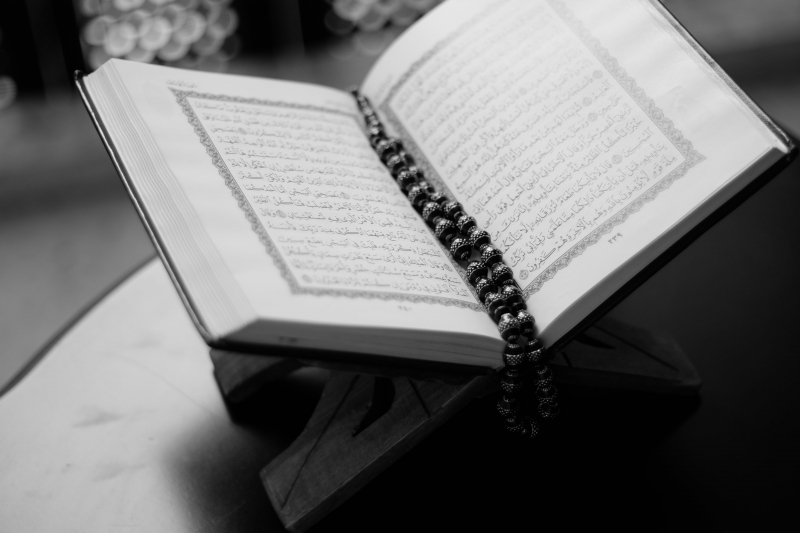
Photo by Abdulmeilk Aldawsari via pexels 
Photo by Pixabay via pexels -
Essay topic: Which is the oldest religion in the world?
Answer:
Religions have developed, evolved, and occasionally gone away over the great fabric of human history. In the midst of claims of eternal knowledge, the question arises: what is the world's oldest religion? This investigation digs into ancient traditions such as Manichaeism, Mithraism, and Tengriism, but the emphasis is on three lasting faiths: Hinduism, Judaism, and Zoroastrianism.
Hinduism, dating back to circa 7,000 BCE, stands as one of the oldest religions still practiced today. With no specific founder or single holy script, its roots are deeply entwined with prehistoric civilizations. The Rig Veda, an ancient text dating around 3,500 years old, holds profound significance in Hinduism.
Judaism, emerging around 2,000 BCE, represents one of the three monotheistic Abrahamic beliefs. Founded by Hazrat Musa (A.S), or Moses, it traces its roots to Hazrat Ibrahim (A.S) as the forefather of the Jewish nation. Divided into Orthodox, Reform, and Conservative movements, Judaism has a rich historical tapestry.
Zoroastrianism, originating around 1,500 BCE or in the 6th century, finds its roots in the teachings of Zoroaster. Predominant from 600 BCE to 650 BCE, it centered in Persia, with followers believing in one God, Ahura Mazda. Zoroastrianism shares key concepts with major religions like Judaism, Christianity, and Islam.
While the exact origins of most faiths remain challenging to pinpoint, Hinduism, Judaism, and Zoroastrianism stand as enduring threads in the rich fabric of religious history. Their ancient roots and enduring practices continue to shape the spiritual landscape, offering a glimpse into the intricate tapestry of humanity's search for meaning.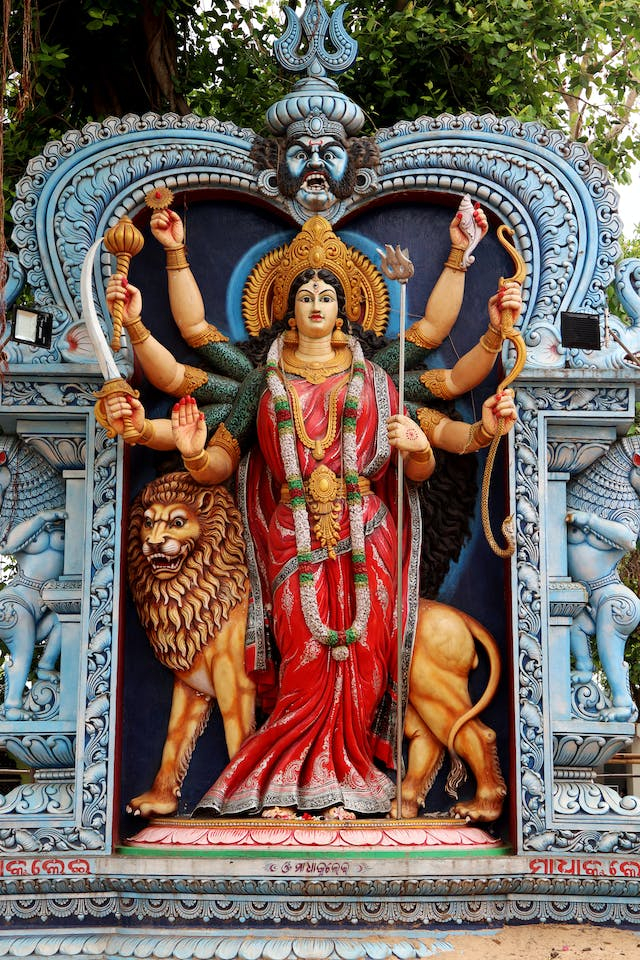
Photo by Khirod Behera via pexels 
Photo by Himesh Mehta via pexels -
Essay topic: Systematic theology: What is humanity to believe concerning God?
Answer:
Systematic Theology delves into the essence of God and His connection with humanity. Unlike an attempt to prove God's existence, the Bible, a cornerstone of this exploration, assumes the indisputable reality of God. Acknowledging the vastness of God, this theological endeavor seeks not to dissect but to present God at a level comprehensible to limited human understanding.
Understanding God requires recognizing the limitations of human capacity. The Bible emphasizes God's attributes, eternity, omniscience, omnipresence, omnipotence, and holiness. However, even the highest heavens cannot contain God, highlighting the profound gap between God's magnificence and our finite understanding.
Theologians, such as Plato, describe God as the beginning, middle, and end of all things, an eternal, unchanging, and omnipotent force. While theology asserts the fundamental fact of God's existence, it doesn't aim to prove it logically. Instead, the Bible, as God's revelation, provides enough for finite minds to grasp God on a human level.
Faith, rooted in the Bible, becomes the bedrock of a God fearing Christian's belief. It's not a blind faith but a conviction built upon the inspired Scriptures. God's revelation forms the basis of faith, unveiling Him as the Creator, Sustainer, and orchestrator of individual and collective destinies.
In conclusion, the question "What is humanity to believe concerning God?" finds its answer in the Scriptures. God, depicted as a Father, transcends humanized characteristics. His omnipresence, omniscience, and sovereignty are discerned through faith, not necessarily through palpable feelings. The nature of God encompasses moral attributes like veracity, justice, grace, mercy, wisdom, and holiness.
While these attributes offer a glimpse into God's character, they fall short of encapsulating the infinite essence of the Divine. The pursuit of understanding God, as encouraged by theologians and the Scriptures, requires humility, recognizing the vastness of the Divine that transcends human comprehension.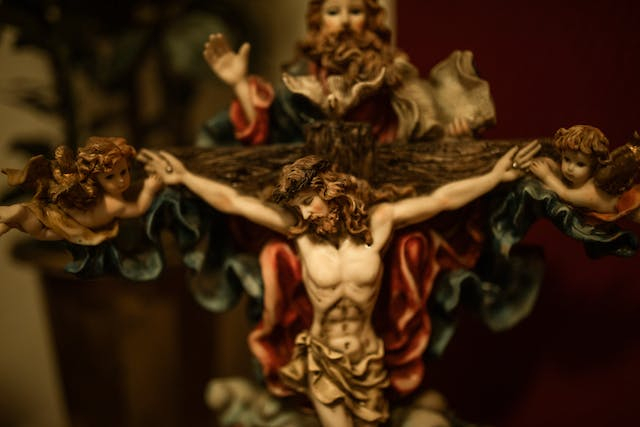
Photo by RDNE Stock project via pexels 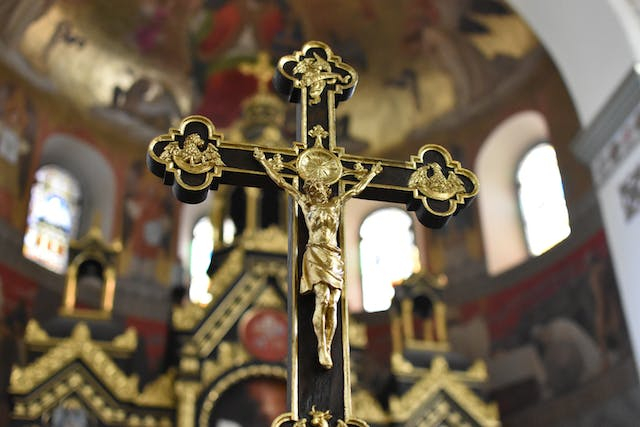
Photo by Pixabay via pexels -
Essay topic: How did Muslims affect European (especially Spanish) Literature
Answer:
The influence of Muslims on European literature, especially in Spain, stems from the historical interplay between Islamic and European civilizations. The Abbasid Caliphate's rise led to the Umayyad dynasty seeking refuge in Córdoba, Spain, initiating Arab dominance for eight centuries. This Muslim presence, known as Al Andalus, significantly impacted the Iberian Peninsula, shaping its culture, language, and traditions.
Muslim influence on Spanish literature is most evident in the language itself. Over 4,000 Spanish words have Arabic roots, reflecting the profound impact on the language's evolution. This linguistic contribution extends beyond vocabulary to include grammatical and lexical rules, shaping modern day Spanish.
Islamic occupied lands in Iberia were centers of literary production, with poems called "moarcas" and their smaller counterparts, "jarchas," emerging. These works, written in Arabic or Mezoarabe, serve as early examples of medieval literature. Moreover, Muslim occupied Spain fostered collaboration among people of diverse faiths, allowing Jewish and Christian influences to contribute to the rich literary landscape.
Muslims also played a pivotal role in the translation and dissemination of Roman and Greek philosophy, enriching European literature with forgotten knowledge. Even beyond Spain, scholars like Miguel Asin Palacios explored the influence of Islam on Western literature, suggesting connections between Islamic narratives, like the "Night Journey," and masterpieces such as Dante Alighieri's "The Divine Comedy."
The Battle of Lepanto in 1571, where Christian and Islamic forces clashed, indirectly influenced the creation of "Don Quixote" by Miguel de Cervantes. The interplay between cultures, both harmonious and confrontational, left an indelible mark on Western literature, shaping some of its most iconic works.
In conclusion, Muslims profoundly affected European, particularly Spanish, literature through linguistic contributions, literary production, and the transmission of knowledge. The intercultural exchanges and collaborations between different faiths enriched the literary heritage of Europe. Acknowledging this historical interconnectedness fosters a broader understanding of the diverse origins of literary traditions and serves as a testament to the positive impact of multiculturalism on artistic expression.
Photo by Xuan Hoa Le via pexels 
Photo by Serkan Göktay via pexels -
Essay topic: Critical analysis of the Gospel of John: Divinity, exorcism, salvation and the Kingdom, crucifixion
Answer:
The Gospel of John offers a unique perspective on key aspects of Christian theology, presenting distinct viewpoints on the divinity of Jesus, the absence of exorcism narratives, the concept of salvation, and the details surrounding the crucifixion. In this critical analysis, we delve into these topics, unraveling the nuanced differences between the Gospel of John and the synoptic gospels.
The Gospel of John introduces Jesus as the 'Word' in its prologue, emphasizing his eternal nature and role as God's agent in creation. This differs from the synoptic gospels, where Jesus is primarily referred to as 'The son of God' or 'The son of man.' Scholars like Daniel propose that John's use of 'logos' aligns with Greek philosophical traditions, signifying Jesus as God. The divergence in portrayal raises questions about the nature of Jesus and the cultural influences shaping these perspectives.
While exorcism accounts are prevalent in the synoptic gospels, the Gospel of John remains conspicuously silent on this matter. Graham H. suggests that John may not have recognized Jesus as an exorcist. The absence prompts speculation, with some proposing that Mary Magdalene's role in John's narrative indirectly acknowledges Jesus's exorcist reputation. Nevertheless, the exclusion leaves scholars pondering John's distinct theological emphasis.
Divergent perspectives on salvation emerge in the synoptic gospels and the Gospel of John. Synoptics highlight deeds alongside faith, while John emphasizes belief alone for salvation. This discrepancy sparks debates within Christianity about the role of works in attaining salvation. Scholars like Matthew W. Bales argue against self-righteousness, asserting that salvation is a grace given gift, aligning with Paul's teachings.
The portrayal of the crucifixion varies between the synoptic gospels and John. While the synoptics mention Simon of Cyrene assisting Jesus, John presents Jesus carrying his own cross. Gnostic traditions, as seen in Basilides' teachings, challenge the accepted crucifixion narrative. Despite historical consensus on Jesus's crucifixion, differences in details raise questions about the reliability of accounts and the interpretation of events.
In scrutinizing the Gospel of John's distinct theological elements, we find nuanced differences in the portrayal of Jesus's divinity, the absence of exorcism narratives, varying perspectives on salvation, and discrepancies in the crucifixion accounts. These divergences underscore the complexity of interpreting biblical texts and contribute to ongoing discussions within Christian theology. As we explore these variations, it is essential to appreciate the rich diversity of perspectives that have shaped Christian thought over centuries.
Photo by Eduardo Braga via pexel 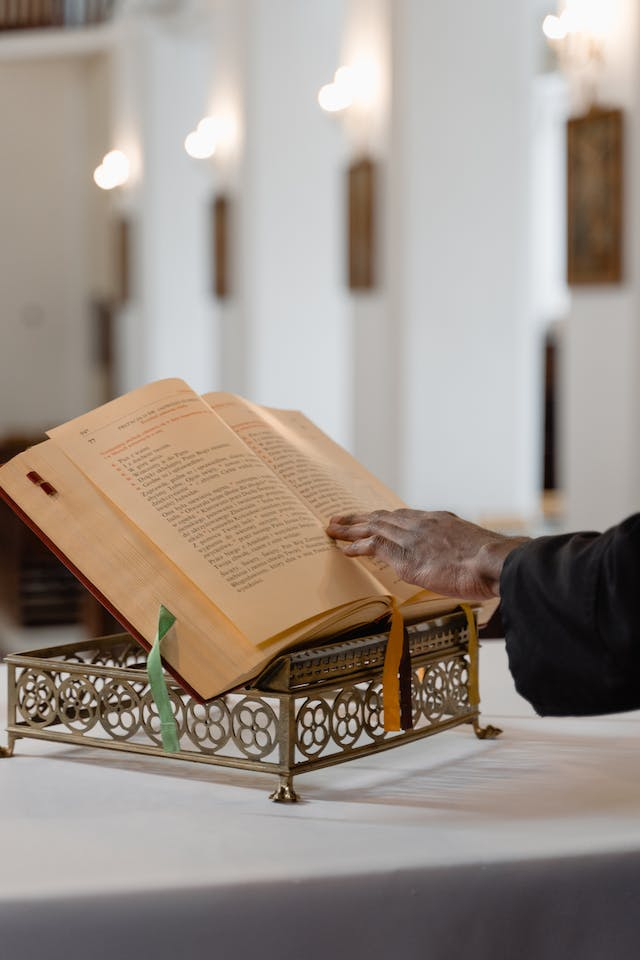
Photo by MART PRODUCTION via pexels -
Essay topic: Does morality depend on religion?
Answer:
The link between religion and morality is a topic that has intrigued thinkers throughout history. In this exploration, we ponder a fundamental question: Does morality depend on religion? Many assert that religious beliefs guide moral conduct, yet an examination of this connection prompts us to consider if morality can exist independently of religious influence. In this essay, we unravel the intricate relationship between morality and religion, delving into its complexities and implications.
Morality, derived from the Latin 'mos' meaning tradition, encompasses customs shaping human life. Philosophically distinct from ethics, it reflects collective practices guiding thoughts on a virtuous life. Religion, divisive in nature, often intertwines with values. While some argue that moral principles stem from faith, others contend that moral considerations transcend religious affiliations. This divergence stems from the complex interplay of upbringing, learning, and personal growth.
Various theistic traditions portray God as a lawgiver, introducing the Divine Command theory where moral correctness aligns with God's orders. While appealing in its objectivity, atheists reject this, challenging the existence of God. The absence of a social moral code, proponents argue, would lead to a society devoid of moral duties and principles. Yet, skeptics question the necessity of a divine moral code for societal cohesion.
Examining morality outside religious frameworks, we find a complex interplay of genetic and cultural influences. Atheists, when faced with moral dilemmas, show no significant deviation from their religious counterparts. The essence of morality, it seems, lies beyond religious doctrines, emanating from universal human empathy and fellow feeling. Philosopher Albert Camus emphasizes love as a fundamental responsibility, transcending the complexities of moral theorizing.
While many associate morality with religious beliefs, a nuanced examination reveals that morality and religion are not mutually dependent. Moral choices can stem from rational reflection, empathy, and a shared understanding of ethical consequences. This realization liberates individuals, fostering a collective pursuit of a fair and just world, independent of religious dogma. Morality, at its core, emerges as a universal human attribute, transcending religious boundaries and contributing to a more compassionate global community.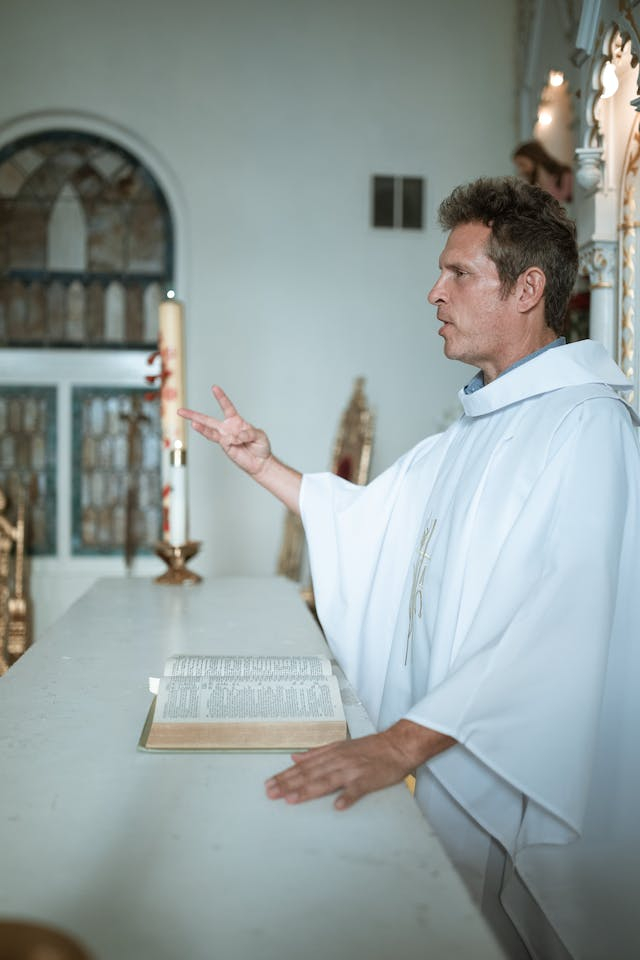
Photo by MART PRODUCTION via pexels 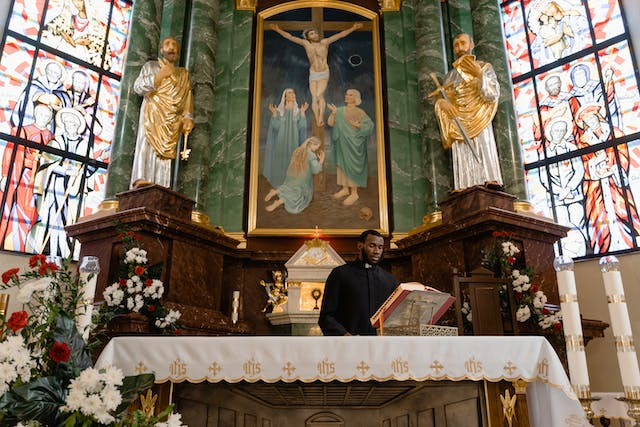
Photo by MART PRODUCTION via pexels -
Essay topic: Domestic abuse: Theological analysis
Answer:
Understanding domestic abuse is crucial for fostering a safe society. However, the complexity of this issue often gets muddled in interchangeable terms like "domestic violence" or stereotypes that limit victims to women. In this exploration, we unravel the layers of domestic abuse through an experiential lens and delve into its theological analysis. By examining its prevalence, impact on victims, and theological perspectives, we aim to shed light on a pervasive yet often misunderstood problem.
Domestic abuse encompasses more than physical violence; it involves control, manipulation, and verbal assault. Conway's insight reveals that abusive behaviors, like clicking a pen, can deeply impact victims. The experience is not limited to a specific demographic; it affects women across social spectrums, debunking myths surrounding income levels. Conway's study exposes the prevalence of unreported cases, emphasizing the need for a broader understanding of domestic abuse within the church.
Statistical data paints a grim picture, with a substantial percentage of married women experiencing threats and physical harm. The underreporting of abuse adds complexity to estimating the true scale. The Church's response, as highlighted by the Reverend Peter Hancock, reflects an acknowledgment of the urgent need to address domestic abuse within religious communities. Despite societal misconceptions, abuse is not confined to a particular income group or influenced solely by alcohol; it is a pervasive issue requiring multifaceted solutions.
Theological analysis delves into biblical texts, highlighting contradictions within religious teachings. While the Old Testament depicts God's violence, the New Testament, particularly Jesus' teachings, advocates non violence. However, problematic narratives within the Bible, often termed "texts of terror", contribute to distorted views on gender roles and perpetuate abuse. Theology of suffering, historically rooted, needs reevaluation to avoid justifying violence as a means of character development.
Domestic abuse is a multifaceted problem rooted in power dynamics, societal myths, and theological interpretations. This essay explores the intricacies of abuse, emphasizing the need for a comprehensive understanding beyond physical violence. Statistical evidence underscores the prevalence of abuse, urging a proactive response from the church. Theological perspectives, though varied, require critical examination to ensure they do not inadvertently perpetuate harmful narratives. Ultimately, addressing domestic abuse demands a collective effort to dispel myths, redefine theological standpoints, and create sanctuaries of support and healing within religious communities.
Photo by MART PRODUCTION via pexels 
Photo by MART PRODUCTION via pexels -
Essay topic: Concept of second coming in yeats poetry: Critical analysis
Answer:
Yeats, living through the transition from Romanticism to Modernism, witnessed profound changes in literature and the arts. Amid the upheavals of two world wars, the shift from personal consciousness to individualism reshaped artistic expression. This essay explores Yeats's unique position, not strictly modernist or romantic, and delves into his critical use of mythologies, symbolism, and rhetoric in poetry.
Yeats's poetry, straddling both romantic and modernist elements, reflects his retreat from a changing world to the peace of the countryside. While he embraces nature, he employs modernist tools like symbolism and rhetoric. Notably, his poems, such as "No Second Troy," "The Second Coming," and "Leda and Swan," weave mythological imagery to highlight the confluence of modernity and imagination.
Yeats's prolific use of myths in his poetry stems from a societal gap in Irish education, where British influence marginalized Irish folklore. Through his works, he aimed to resurrect Irish heritage, cofounding the Irish Literary Theatre. By retelling epics and incorporating mythic themes, Yeats not only addressed his cultural concerns but also navigated the chaotic contemporary world, using myths as mirrors reflecting societal upheavals.
In "No Second Troy," Yeats employs the Trojan War myth to depict Irish activist Maud Gonne, presenting her as a powerful revolutionary akin to Helen. The poem explores the potential chaos arising from Gonne's influence, drawing parallels between Greek legends and contemporary political turmoil.
"The Second Coming" intertwines biblical prophecy with Yeats's cyclical view of history. The poem contends that civilization experiences recurrent rises and falls, as symbolized by the Sphinx. Yeats explores the aftermath of World War I, predicting a tumultuous era before a 'second coming' that signifies not an apocalypse but a transformative phase in history.
Yeats's poetry stands at the crossroads of literary epochs, incorporating romantic themes with modernist techniques. His use of myths serves dual purposes, rediscovering Irish heritage and offering profound reflections on contemporary chaos. By intertwining mythological elements, symbolism and historical perspectives, Yeats crafts poems that resonate with themes of decay, regeneration and the cyclical nature of history. In essence, his poetic prowess lies in the delicate balance between tradition and innovation, myth and reality.
Photo by Suzy Hazelwood via pexels 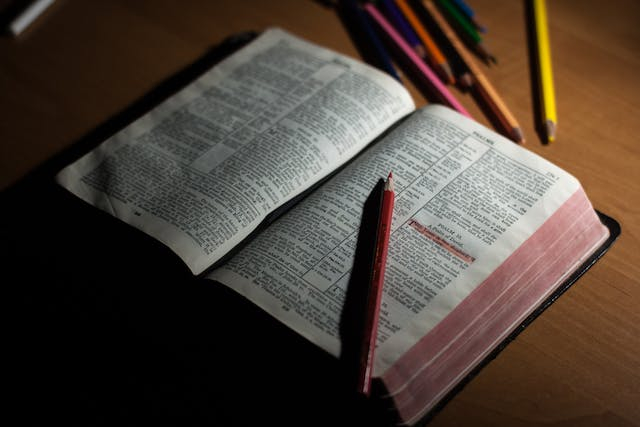
Photo by John-Mark Smith via pexels































